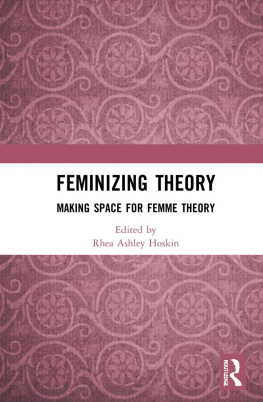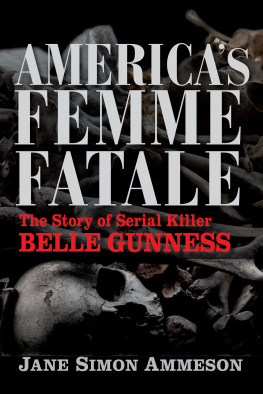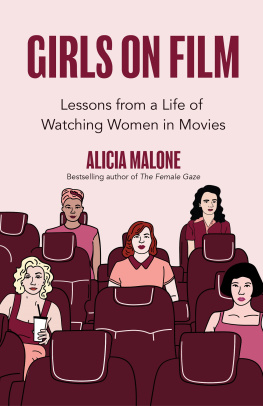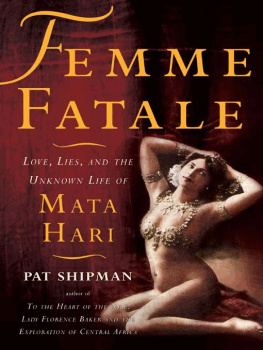
This is a brave and compelling book. Filmmaker and interdisciplinary scholar Agnieszka Piotrowska introduces the notion of the nasty woman into film scholarship, brilliantly updating discussions of the femme fatale, and looking afresh at female subjectivity, power and erotic energy. In writing that is gritty, lively, and sometimes personal, partial and sensitive, Piotrowska engages with debates about #MeToo, and feminist killjoys, as she also looks back to Antigone to think through ways of not giving up on ones desire.
Emma Wilson, Professor of French Literature and the Visual Arts, University of Cambridge, UK
In this volume, Piotrowska has named a new cinematic archetype. The nasty woman, written by a woman, directed by a woman, harks back to Antigone and Medusa, and draws on the femme fatale, but is a thoroughly modern model for our times. Drawing on feminist theory and psychoanalysis, this timely intervention in film theory tackles women whom we dont have to like, but about whom we want to know more.
Lucy Bolton, Senior Lecturer in Film Studies, Queen Mary University of London, UK
This book offers up a timely, incisive analysis of the representation of bad women in contemporary cinema those whose moral choices and troubling, embodied actions mark an ethical shift in our current contemporary climate. Framed through a direct reference to Donald Trumps referral to his political rival, Hillary Clinton, as a nasty woman, Pietrowska carefully re-examines seminal films such as Arnolds Red Road and Polleys The Stories We Tell, drawing on a range of theoretical contexts from Lacanian theory to Laura Marks.
Davina Quinlivan, Senior Lecturer in Performance and Screen Studies, Kingston University, UK
In a series of highly thought-provoking film analyses Agnieszka Piotrowska re-writes the femme fatale as a nasty woman who is a danger not just to men but also to cinemas notion of woman. The figure of Antigone is central to her account of a feminine agency that does not give up on her desire but which is also not simply a matter of revenge. Instead, Piotrowska shows how each film demonstrates the entanglement of drive and desire, of sex and violence in being a feminine subject. The Nasty Woman looks awry at the films it discusses, exposing their paradoxical subversion of both cinemas and feminisms binaries in writing that is highly engaging as both scholarly and personal.
Professor Emeritus Elizabeth Cowie, Film Studies, University of Kent, UK
The Nasty Woman and the Neo Femme Fatale in Contemporary Cinema
The Nasty Woman and the Neo Femme Fatale in Contemporary Cinema puts forward the theoretical notion of the nasty woman as a means of examining female protagonists in contemporary culture and cinema, particularly films directed by women. The phrase is taken from an insult thrown at Hillary Clinton during the 2016 Presidential election debates and reclaimed by the feminists worldwide. The volume also draws from the figure of the femme fatale in film noir.
Piotrowska presents the nasty woman across cultural and mythical landscape as a figure fighting against the entitlement of the patriarchy. The writer argues that in films such as Zero Dark Thirty, Red Road, Stories We Tell, and even Gone Girl the nastiness of female characters creates a new space for reflection on contemporary society and its struggles against patriarchal systems. The nasty woman or neo femme fatale is a figure who disrupts stable situations and norms; she is pro-active and self-determining, and at times unafraid to use dubious means to achieve her goals. She is often single, but when married she subverts and undermines the fundamental principles of this patriarchal institution.
For students and researchers in Cultural Studies, Womens, Gender and Sexuality Studies, Film Studies and Psychoanalysis in Film Studies, The Nasty Woman and the Neo Femme Fatale in Contemporary Cinema offers an original way of thinking about female creativity and subjectivity. It is also a proud celebration of feminist and female authorship in contemporary Hollywood.
Agnieszka Piotrowska is a filmmaker and a theorist. She is best known for her award-winning cult documentary Married to the Eiffel Tower, screened globally in 60 countries. She has written extensively on psychoanalysis, gender and post-colonial culture, setting up creative collaborations in Zimbabwe. She is the author of Psychoanalysis and Ethics in Documentary Film (2014) and Black and White: Cinema, politics and the arts in Zimbabwe (2017). She is a Reader in Film Practice and Theory at the University of Bedfordshire, UK, and a Visiting Professor at the University of Gdansk, Poland.
First published 2019
by Routledge
2 Park Square, Milton Park, Abingdon, Oxon OX14 4RN
and by Routledge
52 Vanderbilt Avenue, New York, NY 10017
Routledge is an imprint of the Taylor & Francis Group, an informa business
2019 Agnieszka Piotrowska
The right of Agnieszka Piotrowska to be identified as author of this work has been asserted by her in accordance with sections 77 and 78 of the Copyright, Designs and Patents Act 1988.
All rights reserved. No part of this book may be reprinted or reproduced or utilised in any form or by any electronic, mechanical, or other means, now known or hereafter invented, including photocopying and recording, or in any information storage or retrieval system, without permission in writing from the publishers.
Trademark notice: Product or corporate names may be trademarks or registered trademarks, and are used only for identification and explanation without intent to infringe.
British Library Cataloguing-in-Publication Data
A catalogue record for this book is available from the British Library
Library of Congress Cataloging-in-Publication Data
A catalog record for this book has been requested
ISBN: 978-1-138-58644-4 (hbk)
ISBN: 978-0-429-50458-7 (ebk)
Typeset in Times New Roman
by Apex CoVantage, LLC
For Leo and For Helena
Now more than ever, it has become important to be clear in establishing the position from which one speaks and not be afraid to do so. To avoid doubt, we need to identify two types of nasty woman. The nasty woman in this book deploys her nastiness in order to fight patriarchy. This nasty woman is not nasty per se; she is nasty because she has to be in order to shift the expected sequence of events in culture and cinema, and therefore in society. The volume discusses films which sow seeds of defiance in the world, the very beginnings of the re-imagining of the familiar tale in which a prince marries a princess and they live happily ever after, with the princess not having a voice or agency of her own. The opposite type of Nasty woman supports Trump, Kavanaughs Supreme Court nomination, and carries a banner announcing #Himtoo instead of #Metoo. Not the woman in this volume. Her agency might be corrupted by the continuous assault of patriarchy but her heart is or used to be in the right place. The womans rage in the films examined in this volume is metaphorical. It is important to bear in mind that an ability to imagine a situation in which a woman is a subject and not an object, and has agency of her own, is still a radical political gesture in contemporary culture.









